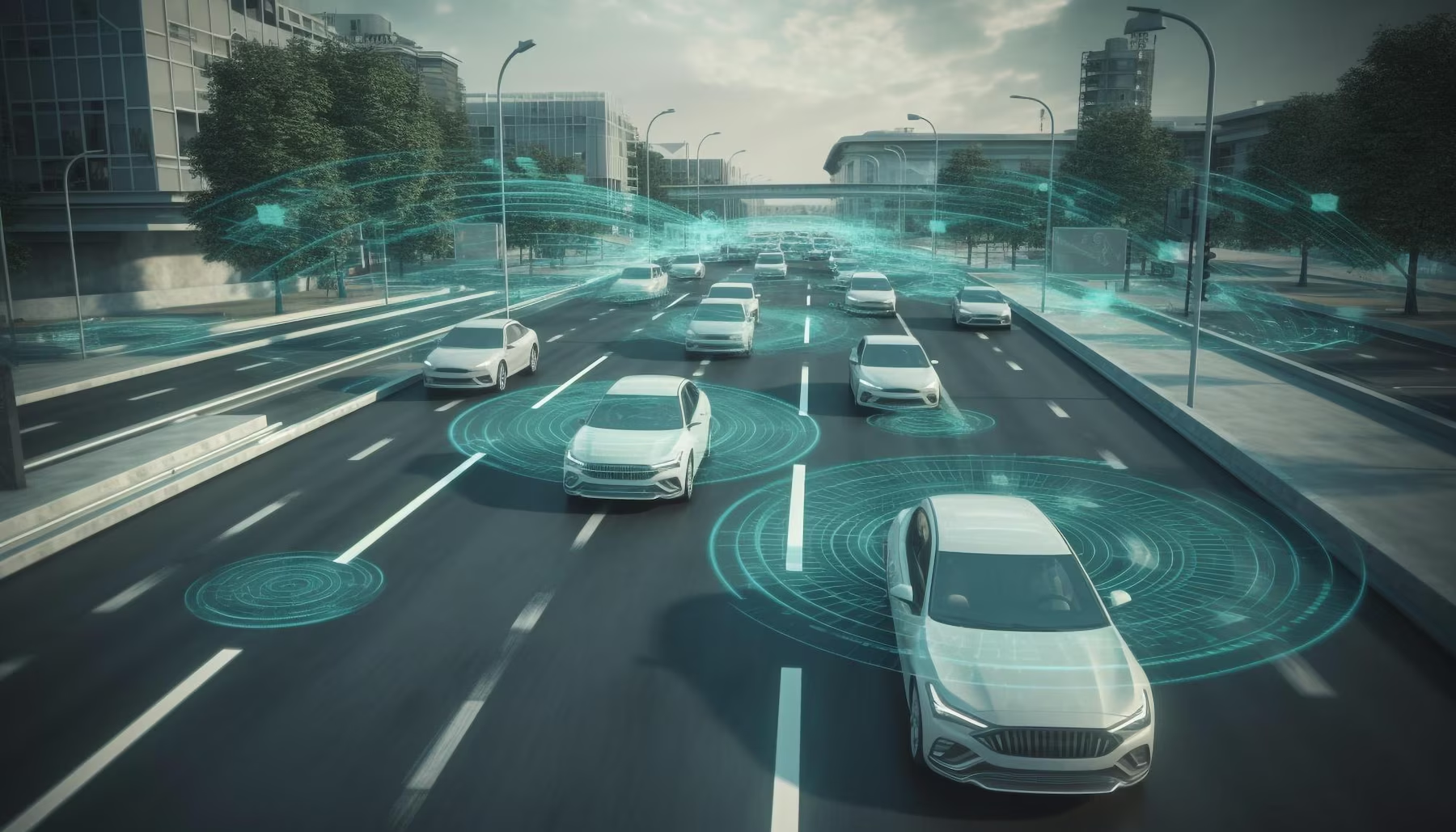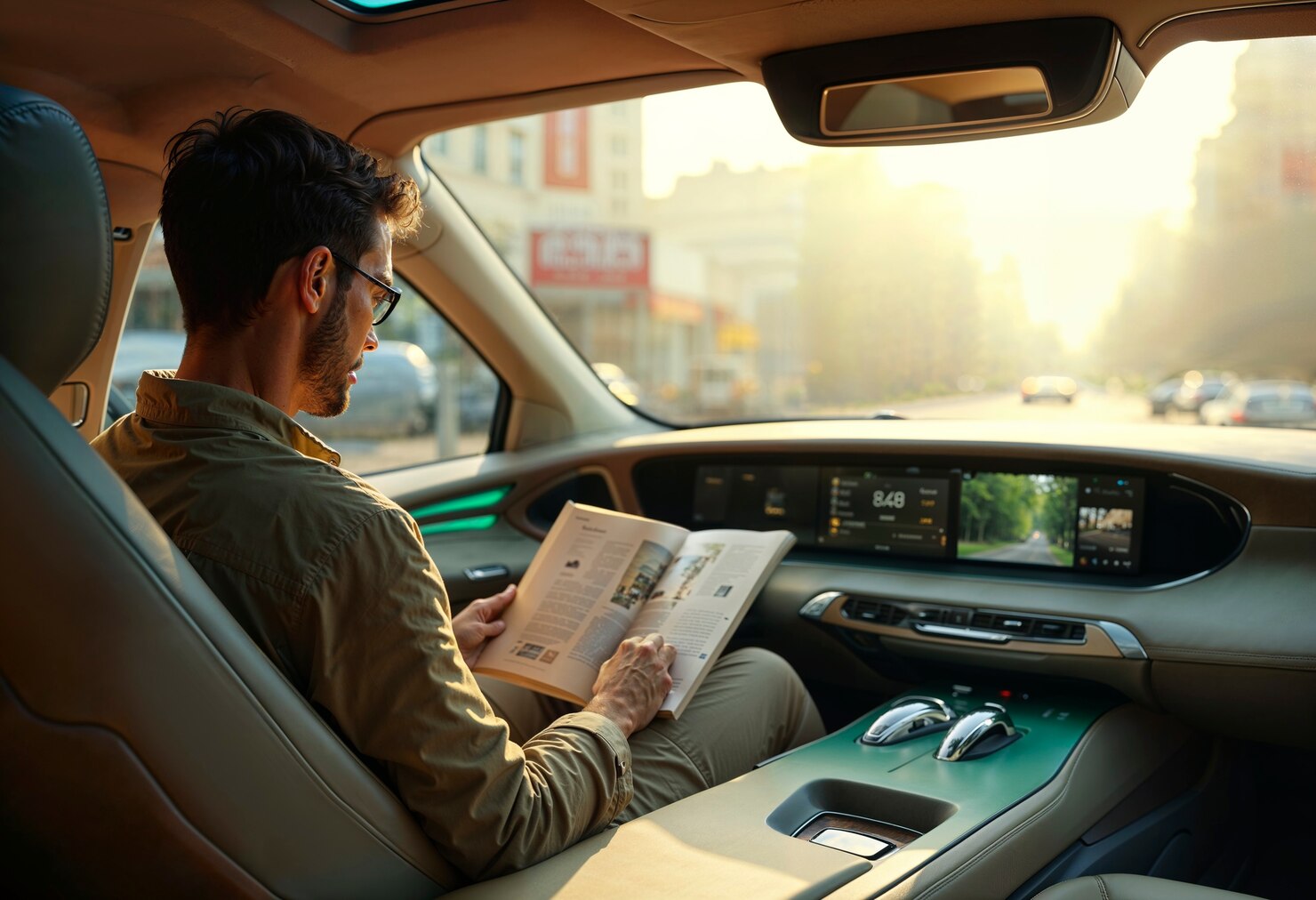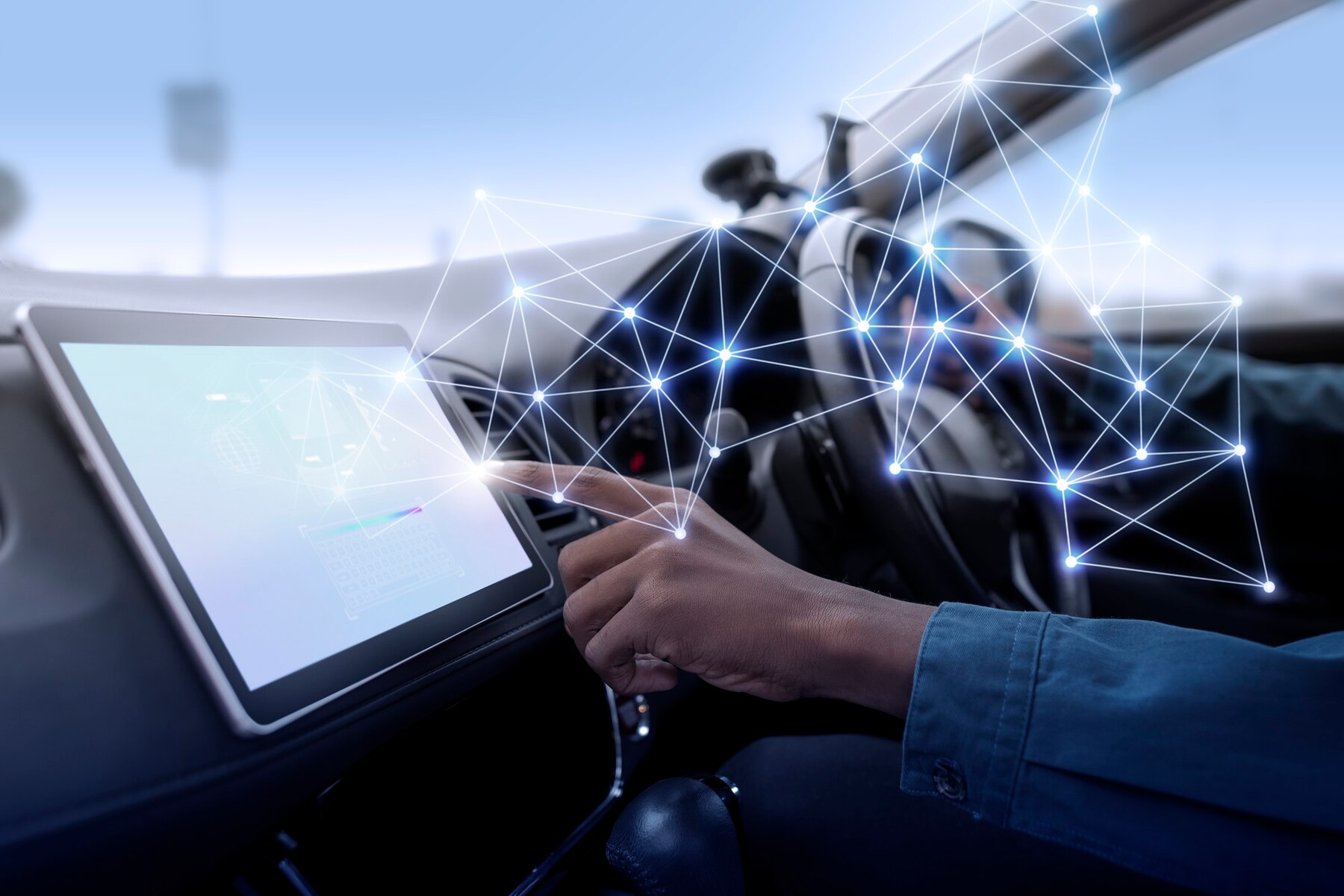
The Role of AI in Autonomous Vehicles
Picture a future where you can unwind while your car takes you to the office. This is not a fantasy; this is already happening with AI in self-driving cars. The future of transportation is here; self-driving technology is revolutionising the way we commute for better, safer, more efficient, and more prevalent commuting for all.
AI is a key capability of any autonomous car, helping it understand what is around it and make the right decisions to get to the right place on the road . But how does AI drive self-driving cars? What is AI’s impact on transportation, challenges, and future of AI in transportation? In this article, we’ll explore AI’s key role in making driverless vehicles possible and its implications for travel in the future.

How AI Powers Self-Driving Cars
Perception and Sensor Integration
Autonomous vehicles use a mix of sensors and cameras to perceive their environment. AI analyses large amounts of data from:
- Lidar (Light Detection and Ranging): Creates a 3D map using laser beams.
- Radar Sensors: Detects objects, their speed, and distance.
- Cameras: Recognizes road signs, lane markings, and traffic signals.
- Ultrasonic Sensors: Helps with parking and spotting nearby objects.
AI algorithms process this data in real time, identifying pedestrians, cyclists, and vehicles for safe navigation.
Decision-Making and Path Planning
AI’s decision-making is crucial for self-driving cars. Machine learning algorithms and deep neural networks enable these vehicles to make quick decisions by:
- Predicting human behaviour: Estimating pedestrian movements and potential hazards.
- Following traffic rules: Recognizing and obeying stop signs and signals.
- Adaptive navigation: Choosing the best route based on traffic and weather.
Autonomous Driving Levels
The Society of Automotive Engineers (SAE) defines six levels of vehicle autonomy:
- Level 0 (No Automation): Humans control all functions.
- Level 1 (Driver Assistance): Cruise control and lane-keeping features.
- Level 2 (Partial Automation): AI assists with acceleration, braking, and steering.
- Level 3 (Conditional Automation): Vehicles handle some tasks but need human help.
- Level 4 (High Automation): Fully autonomous in specific areas.
- Level 5 (Full Automation): No human help is required for any condition.
Most current autonomous vehicles are at Levels 2 and 3, but AI advances are pushing toward Level 5.
Benefits of AI-Powered Transportation
Enhanced Safety
The World Health Organization (WHO) states that road accidents cause over 1.3 million deaths yearly. AI in self-driving cars can reduce human error, the leading cause of accidents, by:
- Preventing drunk and distracted driving.
- Keeping safe distances and avoiding sudden lane changes.
- Reacting faster than humans in emergencies.
Increased Efficiency and Reduced Traffic Congestion
AI improves traffic flow by:
- Predicting and avoiding congestion through real-time data.
- Cutting travel time with thoughtful route planning.
- Boosting fuel efficiency by reducing unnecessary stops.
Improved Accessibility
Autonomous vehicles can help:
- Elderly and disabled individuals who find driving tricky.
- Urban residents looking for affordable transport options.
- Rural areas with limited public transport.
Environmental Benefits
AI-powered self-driving cars support a greener planet by:
- Lowering emissions through intelligent driving.
- Encouraging electric vehicle use, linking AI with sustainable energy.
- Reducing congestion, which cuts fuel consumption.
Challenges and Ethical Concerns
Safety and Reliability
Despite improvements, autonomous vehicle technology faces challenges like:
- Dealing with unpredictable human actions.
- Navigating busy urban areas with many pedestrians.
- Handling lousy weather that can block sensors.
Legal and Regulatory Issues
Governments are grappling with laws for self-driving cars. Key challenges include:
- Who is responsible in case of an accident?
- Testing and certification to ensure safety standards are met.
- Mixing human drivers with autonomous vehicles creates unpredictability.
Ethical Dilemmas
AI may need to make life-or-death choices in emergencies. For instance, if a crash is unavoidable, should it protect passengers or pedestrians? Creating ethical AI guidelines is a significant challenge.
Cybersecurity Risks
Autonomous vehicles can be targets for cyberattacks, such as:
- Hacking navigation systems, causing dangerous rerouting.
- Data breaches, risking personal information.
- Remote control takeovers, creating security threats.
The Future of AI in Self-Driving Cars
Advancements in AI and Machine Learning
Research is focused on enhancing AI models for better predictions and quicker decisions. Reinforcement learning and deep learning will make future autonomous vehicles more innovative and safer.
5G and Connectivity Integration
5G improves self-driving cars by:
- Enabling real-time communication between vehicles (V2V) and infrastructure (V2I).
- Reducing latency for faster reactions in emergencies.
- Facilitating Over-the-Air (OTA) updates to keep the software current.
Widespread Adoption of Autonomous Ride-Sharing
Companies like Tesla, Waymo, and Uber are building AI-powered ride-hailing fleets. This could lead to:
- Less car ownership, promoting shared mobility.
- Lower transport costs through efficient ride-sharing.
- There are fewer parking issues as self-driving taxis operate continuously.
AI-Enhanced Infrastructure
Smart cities will use AI for traffic management, including:
- Intelligent traffic lights that respond to congestion.
- AI-controlled pedestrian crossings for safety.
- Autonomous logistics, improving urban supply chains.

The Road Ahead
AI in self-driving cars is changing autonomous vehicle technology. It’s paving the way for safer, more efficient, and more accessible transport. Though challenges exist, advancements in AI, machine learning, and connectivity will drive innovation in AI-powered transportation.
As governments and tech companies collaborate on safety, legal, and ethical issues, the dream of fully autonomous vehicles is becoming a reality.
Are you ready for a future where AI takes the wheel? Stay informed and explore how AI is transforming transportation.
What do you think about self-driving cars? Share your thoughts in the comments!


